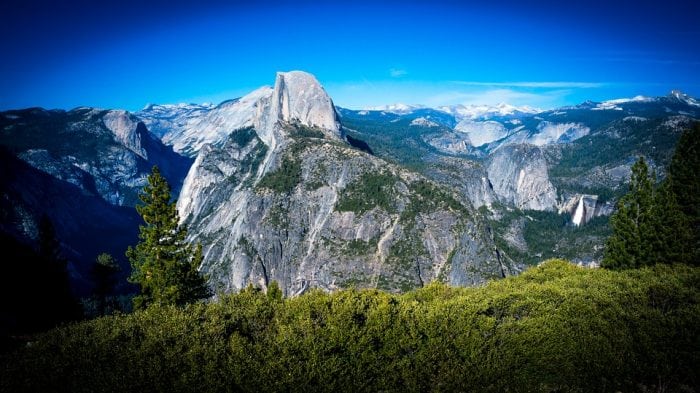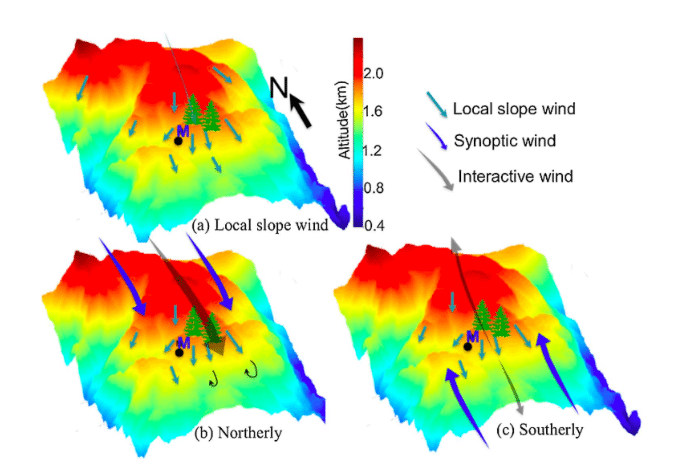
There have been great strides in the human understanding of our impact on the global climate in recent decades. As scientists push forward with that effort, it has become necessary to improve our knowledge of the finer details of the interactions between the terrestrial biosphere and the atmosphere above.
Climate models on most scales must address the amount of carbon dioxide that is either produced or absorbed by the ecosystem, a quantity known as net ecosystem exchange (NEE). Although it appears to be a simple parameter, it is not easy to measure. After all, scientists cannot put a sensor on every leaf, every blade of grass, every square inch of topsoil, or on each nostril of any critter in the area, tuned to analyze every breath. Since the 1950s, scientists have instead used an array of methods to measure, estimate, or model the processes that contribute to NEE, running the gamut from direct observations in the wilds of nature to theoretical models dreamed up on a computer in a sterile lab with no windows.
One of those methods, known as the eddy covariance technique, measures the movement of energy and matter (notably including carbon dioxide) caused by turbulence in the atmosphere. Since turbulent flux is usually the dominant contributor to total flux during the course of a 24-hour day, eddy covariance has proven to be tremendously useful. However, the method is not perfect.
The issue we focused on for this paper is that most eddy covariance measurements are collected from one elevation on one tower, high above the plants at a site, imperfectly capturing the complex details of the local atmospheric flows that often change with elevation as well as horizontal distance. The synoptic flows brought by the weather system passing through at each moment cause movement of energy and matter, which are measured well by the eddy covariance towers, but these winds also interact with the topography and vegetation below. Mountains and old forests have a significant impact on airflow, NEE, and energy flux, but even a gentle slope and a field of wheat will change how the sky interacts with the ground.
We simulated the airflows over a particular mountainous forest in the Italian Alps for which we had eddy covariance measurements from multiple towers (the Renon site in the well-known ADVEX campaign). Our goal was to use the observed flow passing one tower to predict all of the flows on the slope, and then compare that prediction with the measurements from the other four towers. To model large-scale motions that are strongly impacted by small-scale effects, we used a Reynolds-averaged Navier-Stokes (RANS) turbulence model. This method has successfully reproduced the flows resulting from various weather patterns interacting with complex terrain (such as sloped, forested land) in the recent past.
Since we based our study on a site that was subjected to extensive prior research, we enjoyed the luxury of having many of the necessary empirical parameters required by the RANS model at our fingertips. This serendipitous series of events – a thoroughly researched sloped forest, a mature model refined by numerous prior studies, and multiple eddy covariance towers still operating – provided an excellent opportunity to numerically examine the airflow in complex terrain in great detail under many different synoptic conditions.
The results were mostly successful, as the model was able to resolve many details of the interaction between synoptic winds and the terrain, including katabatic drainage flow (caused by cooling, denser air near the surface sliding down the mountain despite synoptic flow in other directions), recirculation bubbles reversing flow back upslope opposite the dominant weather pattern, and time periods where the slope actually enhanced the synoptic flow, causing elevated fluxes of energy and matter (see Figure 1).

Figure 1: The schematic diagram of the interactions between local slope flow and synoptic winds (a) Local slope wind only, (b) Local slope wind interacting with northerly and (c) Local slope wind interacting with southerly. This topography represents a 10×10 km domain surrounding Renon site and M is a location of measurement tower at Renon site. (Republished with permission from Elsevier)
Our model was able to predict interactions in the deep canopy very well. However, scientific understanding of the complex flow patterns resulting from synoptic weather interacting with sloped forests is still not nearly perfect. The model we used focused on the details of local slopes and vegetation, which were dominant factors in the thermo-topographic flows seen in the middle and lower canopy, so our results in this part of the project site were encouraging. However, the upper canopy was most strongly influenced by synoptic flow and the large-scale impact of the Alps, which received very limited treatment in our model, and therefore mismatches between the tower measurements and model predictions occurred more often.
Another opportunity for improvement was found in some of the temperature profiles, where our model failed to match the observed thermal condition near the other towers. We were surprised to find that energy flow within the canopy at the project site was very sensitive to water stress on the vegetation, which our model did not account for at all.
Our model advanced understanding of interactions between local thermo-topographic slope flow and large-scale synoptic flow in a forest with a strong slope. Further improvements should focus on downscaling techniques, such as coupled meteorological and RANS models, to predict large-scale forcing that was missing from our model. In addition, some treatment of latent heat flux changes caused by crops and other vegetation interacting with energy flux in the larger forest would improve the model results.
These findings are described in the article entitled Numerical study of the interplay between thermo-topographic slope flow and synoptic flow on canopy transport processes, recently published in the journal Agricultural and Forest Meteorology. The project was completed by Xiyan Xu and Chuixiang Yi from City University of New York (CUNY) Queens College and the Graduate Center, Leonardo Montagnani from Forest Services of Autonomous Province of Bolzano and the Free University of Bolzano, and Eric Kutter (also from CUNY Queens College and the Graduate Center).









